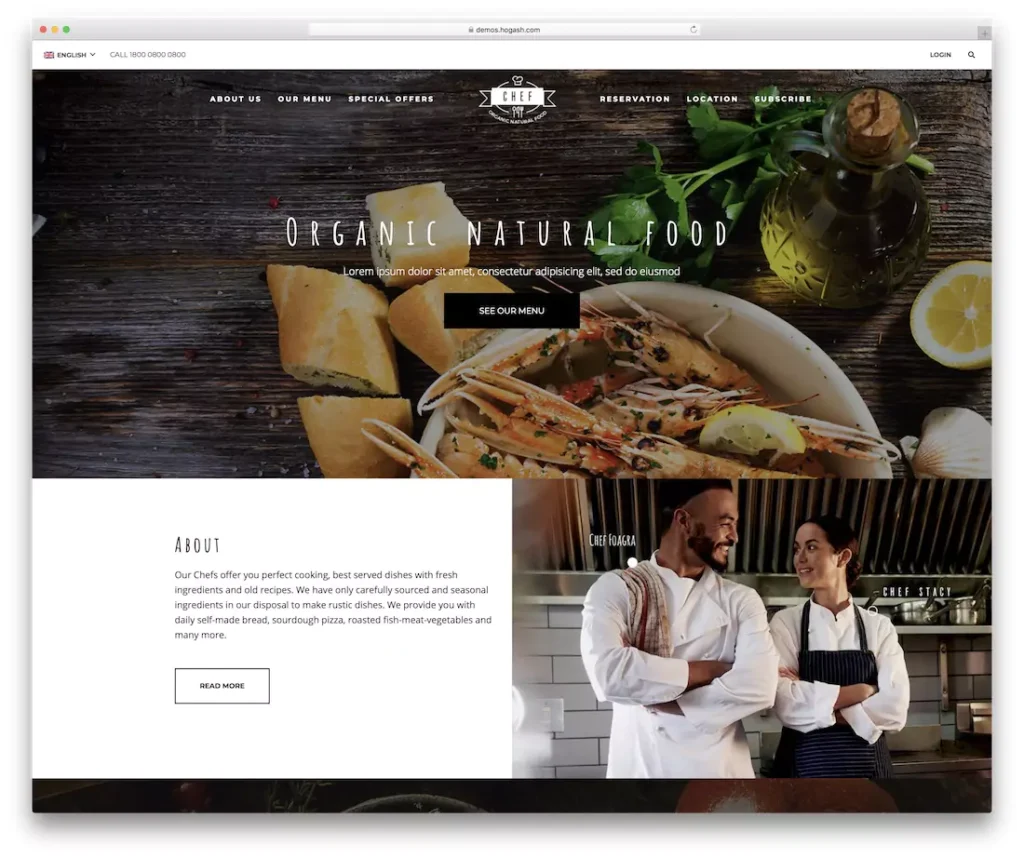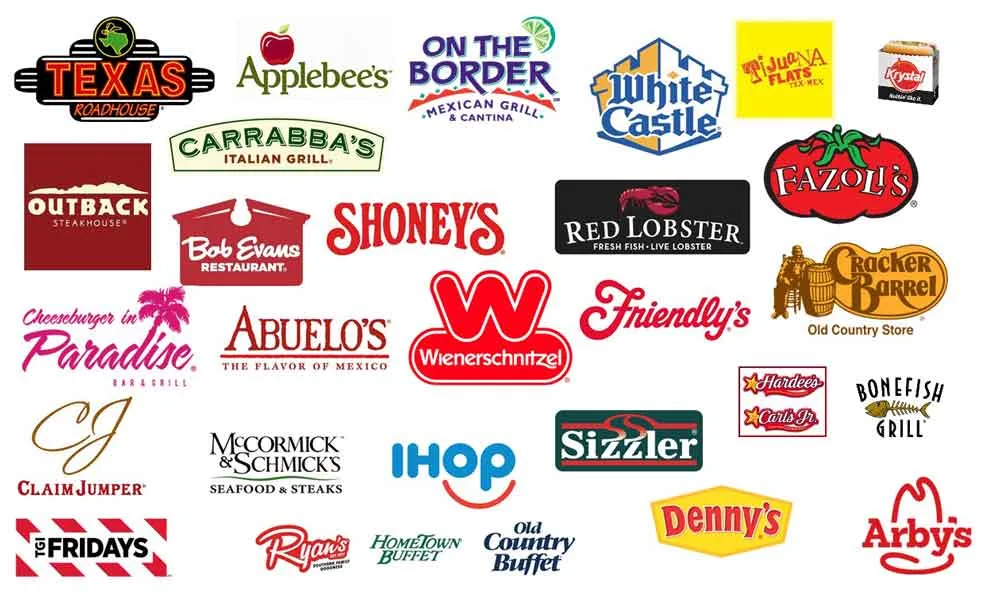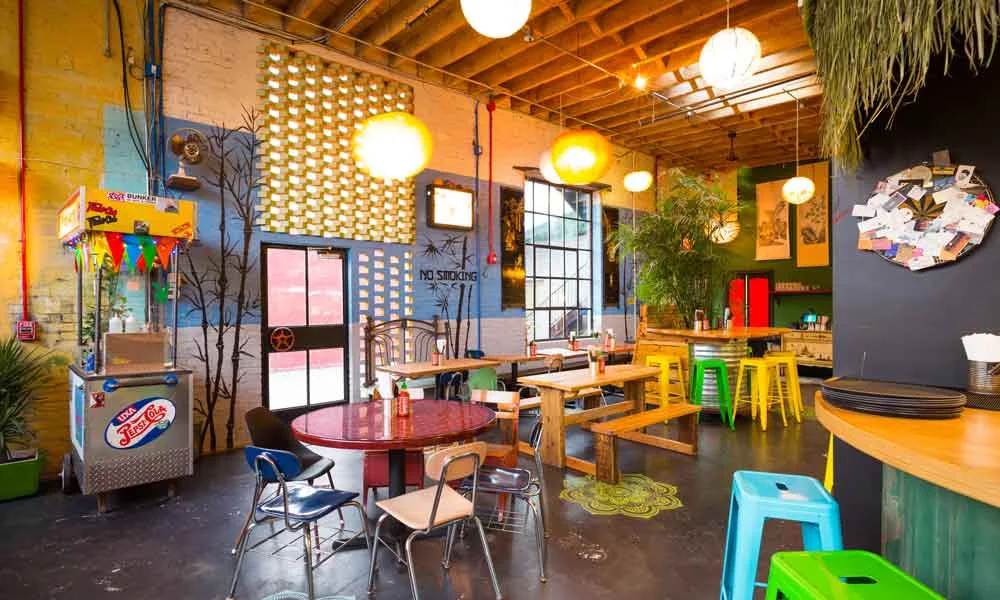Restaurant Branding: How to Make Your Eatery Stand Out
Have you ever walked down a bustling street, past rows of cafes and restaurants, and wondered what makes one spot more popular? Or have you stared blankly at a menu, overwhelmed by choices that all sound the same? If so, you've experienced the power of branding.
A strong restaurant brand is like a favourite food – its delicious, distinctive flavours keep you returning for more. It establishes the personality and promise of a place to help it stand out from the crowd. Simply put, branding makes dining memorable.
So, if you're a restaurateur looking to spice up your image or a foodie curious about the industry, keep reading! I'll take you on a flavour-filled journey through the world of restaurant branding.
Table of Contents
What the Heck Is a Brand Anyway?

Branding goes beyond a cool logo or catchy name. A restaurant brand encompasses the entire experience and emotions surrounding your establishment. It's the vibe customers get when they walk through the door and influences everything from decor to menu descriptions.
A strong brand gives your restaurant an identity that makes it irresistible to your potential customers. It helps you stand out in a crowded dining scene and be remembered fondly long after the last bite. Your brand should set clear expectations about your restaurant type, the quality of food and service, and the overall dining experience.
A brand is a promise you make to your customers. And to be successful, you need to deliver on that promise consistently.
Real-World Examples of Standout Restaurant Brands
Still, feeling a little fuzzy on what makes a great restaurant brand? Let's look at some real-life examples:
- In-N-Out: This popular West Coast burger chain is a branding rockstar. Everything from the simple red-and-white colour scheme to the not-so-secret menu screams fresh, no-frills, Californian cool. In-N-Out has customers lining up for its juicy, mouthwatering burgers and hand-cut fries thanks to a brand built on quality ingredients, customisation, and an iconic vibe.
- Nando's: Love it or hate it, you can't deny the bold flavour of Nando's brand. This Portuguese-style chicken place is known for its spicy, playful personality that shines through its funky restaurants and cheeky marketing campaigns. By loudly celebrating its African-Portuguese roots, Nando's has built a distinct identity that resonates with customers looking for a fun, tasty dining experience.
- Momofuku: David Chang's upscale Asian fusion empire has a moody, edgy brand that drips with laid-back cool. The minimalist design, eclectic music, and rule-breaking dishes perfectly capture the trendy, experimental vibe Momofuku aims for. This is a prime example of how design, atmosphere, and food can combine to craft a seductive dining narrative.
Your Brand Blueprint
So those are some tasty examples of restaurant branding in action. But how do you create an unforgettable brand for your eatery? Let's dig in!
Define Your Restaurant's Concept and Personality
Every excellent restaurant brand starts with a robust and unique concept. This is the foundation on which you'll build your look, voice, and overall dining experience.
Start by getting hyper-specific about your restaurant concept. Are you a quirky breakfast spot celebrating local flavours? A sleek date-night destination fusing French and Japanese cuisines? The more focused and differentiated your niche, the more your brand can be.
Next, bring that concept to life by deciding on your restaurant's core personality traits and mission statement. Friendly and approachable or luxurious and exclusive? Playful and nostalgic or minimalist and modern? The personality should reflect your style of cuisine, ambience, and target customer. For example, you don't want a stuffy, formal vibe for a funky taco joint.
Choose a Captivating Name

A restaurant's name is often the first brand impression customers get, so choose wisely! You want a memorable moniker that hints at your concept and personality.
Some tips for crafting a killer restaurant name:
- Keep it short and sweet – people should be able to say, spell, and remember your name easily.
- Make it meaningful – reference your cuisine, location, background story, values, etc. Incorporating more profound significance helps the name stick.
- Play with words – wordplay like puns, alliteration, and foreign words can add memorability and flair.
- Think visually – a vivid, image-evoking name can stimulate the senses and create stronger associations.
- Say it out loud – make sure the name rolls off the tongue and sounds pleasant!
Craft a Captivating Logo
Along with a name, a distinctive logo is a crucial visual shorthand for your restaurant brand. It should work well across all your platforms, be aesthetically appealing yet simple, and immediately tell customers about the vibe of your place.
For a logo that leaves a tasty impression, focus on these key ingredients:
- Style: The artistic style (classic, quirky, minimalist, etc.) should match your brand personality
- Colour: Use 1-3 colours max, and make sure the hues align with your desired look and feel
- Image: If you include an icon, pick something conceptually linked to your restaurant (e.g. the food you serve, an interior design motif, etc.)
- Typography: Select 1-2 clean, legible fonts that complement your overall aesthetic
And remember, a good logo looks great at all sizes – from matchbook to billboard! So, keep things clear and free of clutter.
Develop a Mouth-Watering Visual Identity
With your name and logo nailed down, it's time to add more visual garnish with brand colours, patterns, typography, and imagery that bring your restaurant's unique personality and concept to life.
Some ideas for crafting a delicious aesthetic:
- Colour palette: Build out a palette of 3-5 complementary hues that capture your restaurant's spirit (bold Creole flavours could be splashy oranges and turquoises, while an alpine vibe might use cool blues and greys). Use throughout your branding and design.
- Patterns and textures: Choose easily recognisable motifs, prints, or textures that will become part of your brand's visual signature (this could be subway tiles for a diner, a chilli pepper design for a Szechuan place, etc.).
- Typography: Select 2-3 brand fonts that capture your desired tone and styling. Ensure they're versatile enough for all copy needs (menus, signs, ads, etc.).
- Photography and imagery: Define the photographic style for food, interiors, and lifestyle imagery to give your marketing a cohesive look (bright and plated for a high-end seafood joint, vibrant and energetic for a tapas bar, etc.).
Create a Menu that Whets the Appetite

The menu is one of your most visible branding tools, so approach it thoughtfully! An on-brand menu echoes your restaurant's personality through tone of voice, imagery, structure, and more.
When designing your menu:
- Use descriptive, evocative language that brings dishes to life and aligns with your brand personality (laid-back, sophisticated, playful, etc.).
- Arrange menu sections and name them in creative, thematic ways that capture your concept (a Creole menu might have sections like “Straight from the Bayou” and “Old New Orleans Classics”).
- Commission mouthwatering, styled food photography that gets taste buds tingling and looks magazine-worthy.
- Use accent colours, simple illustrations, and strategic pops of white space to highlight essential items and guide eyes through the menu.
- Choose legible, elegant typography that matches your visual identity but is easy to read.
Perfect the Ambiance
While mouthwatering meals are essential, stellar hospitality and flawless ambience shape the dining experience; every element – music, lighting, and staff attire – should align with and amplify your brand.
To craft the perfect restaurant vibe:
Setting the Scene with the Perfect Scents and Sounds
It's no secret that certain scents and sounds stimulate our appetites and influence our moods. Use this to your branding advantage!
- Signature scents: Many restaurants develop custom aromas that tie to their concept and get bodies ready to eat. An Italian spot might use herbs like basil and rosemary, while an Indian restaurant relies on the enticing smells of curry and smoky spices. Find fragrances that reflect your cuisine and match guests' expectations.
- Curated playlists: Create mood-boosting, on-brand playlists to pipe through your restaurant. The music should enhance the dining experience and immerse guests in your desired atmosphere. A casual burger bar might opt for 70s classics, while an elevated sushi house could play ambient electronica. Adjust volume and tempo to match your ambience at different times of the day.
Artful Lighting to Set the Mood
Lighting dramatically impacts ambience, so be thoughtful and strategic in your use of illumination. Your goal should be lighting that flatters your restaurant's overall vibe and design.
- Dimmers: Invest in dimmable fixtures to transition from bright and energised during service to moodier and more relaxed during off-hours. Controlling light levels lets you manipulate the atmosphere.
- Task lighting: Use direct lighting over tables (e.g. hanging pendants) to provide sufficient but flattering light for dining. Layer this with uplighting or downlighting to sculpt dimensionality.
- Accent lighting: Strategically place accent lights (like track lighting) to draw focus to key design features like artwork, textures, or your open kitchen. This enhances the visual interest.
- Natural lighting: If you're lucky enough to have windows, use sheers or light-filtering drapery to soften and warm sunlight. Natural illumination helps open up a space and saves on electricity.
Eye-catching Interior Design

Your restaurant's interior should echo brand elements like colour palette, textures, and style. But beyond pure aesthetics, the layout and design should also facilitate the type of dining experience you want.
- Flow: Consider how furniture placement impacts traffic flow, table spacing, and guest behaviour. Innovative design makes service easy and customers relaxed and comfortable.
- Scale: High ceilings and open volumes lend drama and grandeur, while lower ceilings and cosy nooks foster intimacy. Adjust scale and volume according to your vibe.
- Materials: Leverage textures and materials that align with your brand – warm woods for rustic charm, sleek subway tiles for minimalist cool, and lush greenery for a tropical oasis. Surfaces should delight the senses.
- Artwork: Commission original murals, photography, or other artworks that bring personality and visual interest. This can serve as social media candy, too!
Distinctive Service Style and Attire
While service standards like friendliness and timing are universal, details like language, pace, and attire should suit your brand perfectly. Fine-tune the customer service experience so front-of-house teams deliver hospitality harmoniously with your concept.
- Communication style: Are servers bubbly and laid-back or more formal and reserved? Refine vocabulary and tone so guest interactions match the vibe.
- The pace of service: The tempo of service impacts the entire dining journey, from greeting to check delivery. An upscale establishment might have a slower, more leisurely pace, while a casual cafe buzzes at a friendly clip.
- Staff uniforms: Outfits should marry function and fashion while complementing restaurant concept design. A cool sneaker and apron combo for a neighbourhood joint, elegant all-black with crisp aprons for fine dining. Have fun with on-brand personal flair like bespoke pins or stylish headwear.
Create Content that Leaves Mouths Watering
In today's social media-driven world, mouth-watering content marketing is critical for attracting new diners and expressing your unique brand personality. Leverage digital channels to showcase what makes your restaurant unique and drum up some serious cravings!
An all-you-can-eat feast of engaging content ideas:
- Drool-worthy food photography that makes bellies rumble (great for Instagram!)
- Mouth-watering recipe and technique videos like “How to Make Our Famous Burger.”
- Atmospheric lifestyle imagery that captures your one-of-a-kind vibe
- Staff spotlights that introduce team members' personalities and passion
- “Secret menu item” reveals that gives insiders access to exclusive dishes
- Interactive polls, quizzes, and giveaways that boost engagement
- Blog posts packed with SEO keywords that draw in ravenous readers
- Eye-catching graphics and quote cards that inspire double-taps
Strike a balance between promoting new menu additions and beloved signature items. Always customise content style, tone, and language to reflect your restaurant's distinct personality!
Craft Clever Marketing Campaigns

Digital content helps diners connect with your brand daily, but what about attracting new customers? That calls for creative, memorable marketing and a stand-out online presence.
Entice newcomers and reignite love from return guests through buzzworthy campaigns like:
- “Friendsgiving” prix fixe menu and branded hashtag in November
- “Taco Takeover” taco specials and Instagram contest in October
- Valentine's Date Night prix fixe with rose for each couple
- Limited-time seasonal cocktails and bar snacks (Harvest Mules and Pumpkin Hummus)
- Whimsical LTOs (sandwiches for Chat GPT launch, Star Wars-themed milkshakes, etc.)
Lean into pop culture events, holidays, and social causes that are on-brand and will excite your target audience.
And don't be afraid to team up! Collaborate with local brands, influencers, or charities on initiatives like charitable partnerships, giveaways, and exclusive dining experiences. It cross-pollinates audiences and makes your marketing dollars stretch further.
Ready to Fix a Restaurant Branding Recipe All Your Own?
Phew! We covered a lot of ground, and I hope your branding appetite has been well and truly whetted. Let's quickly recap the critical ingredients for cooking up an irresistible restaurant brand:
- Delicious food and stellar service are table stakes – branding builds robust bonus flavours on top
- Create a cohesive brand identity captured in a name, logo, colours, design elements, and more
- Define and live your unique brand personality and positioning through everything you do
- Use all your customer touchpoints – menu, ambience, content, and campaigns – to immerse diners in your one-of-a-kind brand experience.
With the perfect blend of personality, creativity, and consistency, you can craft a mouth-watering brand with diners eating food out of your hand. Established eateries and hungry new concepts can use strategic branding to elevate their business and attract ideal customers. The authentic secret sauce?
Tap into what makes your restaurant unique and infuse that flavour into every brand bite. With tasty branding, you can fill seats, win hearts, and have diners coming back for seconds!
FAQs:
Does my restaurant need branding?
Absolutely! Branding gives your restaurant a distinctive identity, creates emotional connections with customers, and helps you stand out in a competitive dining market. It influences every aspect of the guest experience and impacts success.
What's the difference between a brand identity and a brand?
Brand identity encompasses the visual elements that form your brand's recognisable look and feel, like the logo, colours, etc. Your overall brand is the sum of thoughts, feelings, and associations surrounding your restaurant.
What makes a good restaurant logo?
Effective logos are simple, versatile, and meaningful and match the restaurant's concept and personality. They should scale well across different sizes and look great in colour or black and white. Pick 1-2 custom fonts and images that hint at your cuisine or ambience.
How often should I refresh my restaurant branding?
Most brands in the market stick to 3-7-year cycles between significant updates to keep things cohesive and recognisable. However, consider minor tweaks every 1-2 years to keep the brand modern and aligned with consumer tastes. Annual menu updates also provide an opportunity for seasonal design refreshes.
Do I need professional help to handle my restaurant branding strategy?
While you can certainly develop your scrappy branding early, it's wise to seek professional creative support as you grow. Agencies and branding experts have strategic and execution strategy know-how to perfectly translate your vision into an elevated, cohesive brand system. Well worth the investment!
